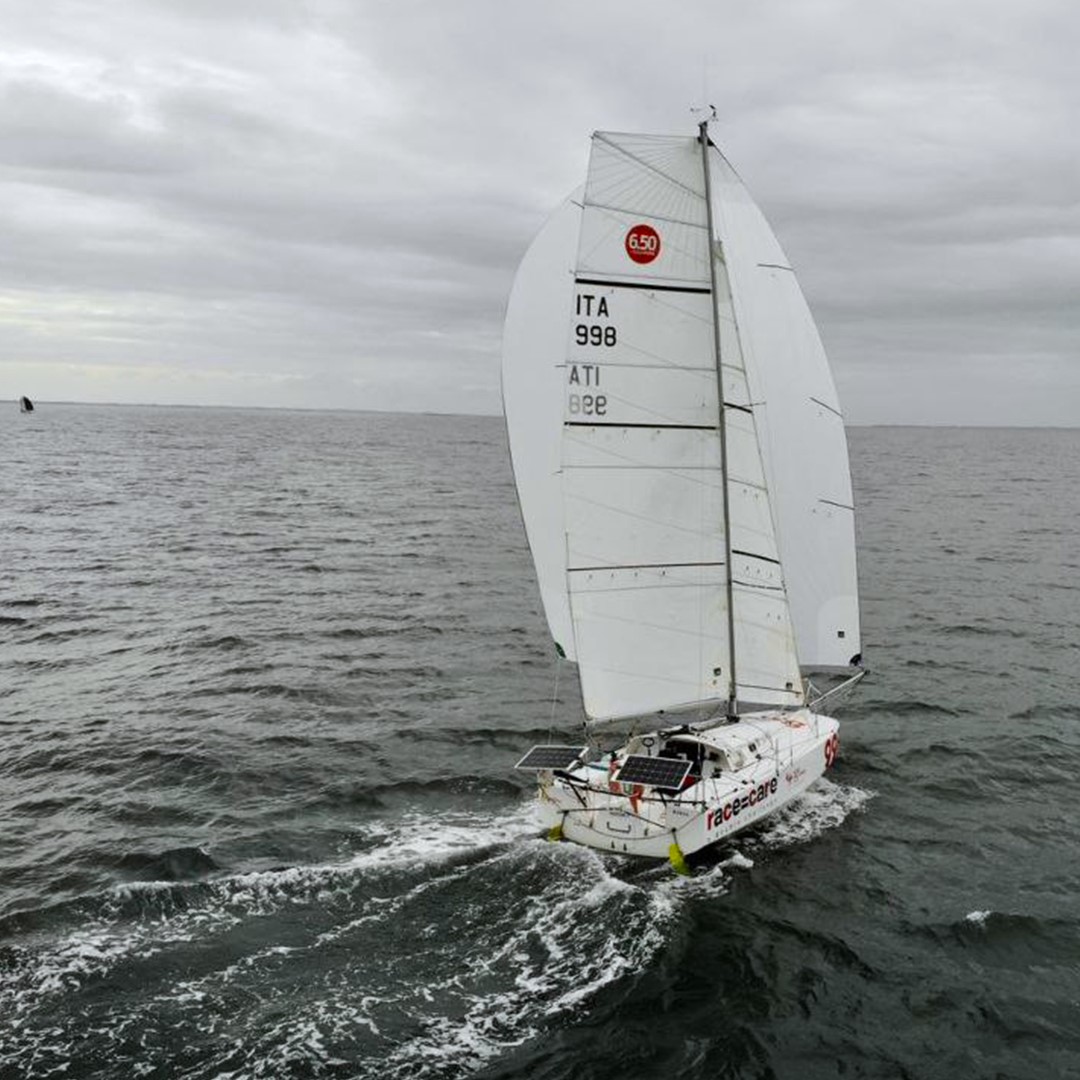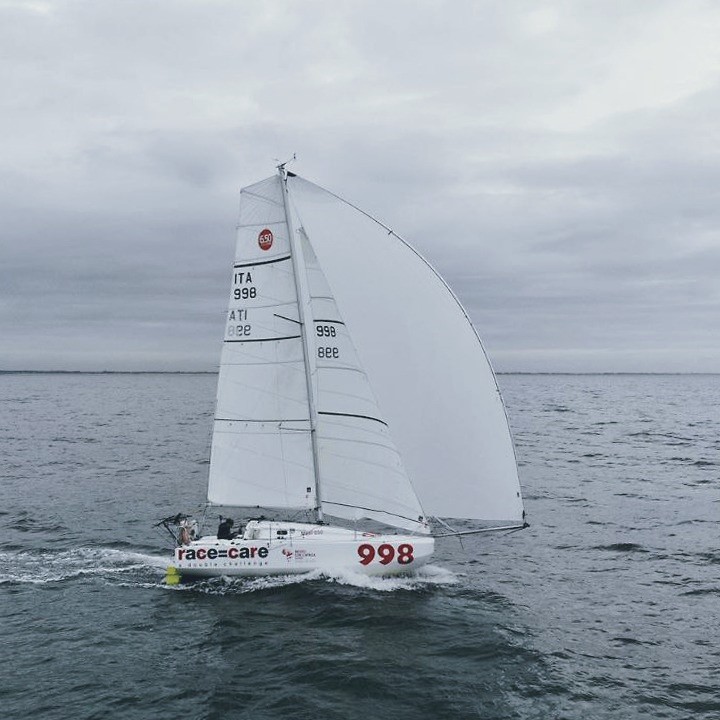
Preparation:
The days before the race are always intense and frenzied for me: last checks and preparations for the boat, materials to bring to the race, weather analysis, checking and setting the latest waypoints on the GPS, and the inevitable safety checks and briefings with the organization.
It’s unbelievable… I’ve been racing in the mini class for years now, and I usually arrive with almost everything ready, but the day before departure is always hectic, with a lot of details still to be prepared.
The season is starting, and expectations are high this year!
The 2022 season showed significant improvement and ended with a podium finish at SAS 2022. The boat is fast, and this year I can’t wait to push it to its maximum potential.
Day 1:
Ready, set, go!
Upwind start with 87 small mini 650s tacking in the bay of Pornichet. And then off we go, after the first buoy, flying the spinnaker and heading towards the first waypoint, Birvideux. The first 24 hours of the race are intense, with many wind and current transitions. It’s not easy to take a moment to relax without losing meters to competitors. So, let’s go full throttle!
After rounding the southernmost waypoint, in front of Ile de Yeu, the first really complicated choice presents itself, where the race can be won or lost… the upwind climb begins… but a fork in the road opens up that will haunt me for much of the day…
Day 2:
Not having weather information on board is not easy at all. We have to interpret what we see in relation to what we studied before departure.
So the question that has been keeping me company for a few hours is: will the sky clear or remain overcast? Which in plain terms means: will the wind be thermal* or only synoptic**? Will it come from the NW or NE? This distinction in this upwind climb will make the difference in the last part of the race!
And so, I have to make a decision… with the doubt that it may not be the right one… I choose the farthest offshore route, convinced that I will see the sky clear in the afternoon and catch the wind in its left rotation.
Hours pass, and the sky seems less and less willing to clear of clouds… so as soon as the opportunity presents itself, I decide to make small tacks to return and protect myself from the rest of the fleet, which is hugging the coast, the route chosen by the majority of competitors.
Finally, around 4:00 PM, when I was already regretting my decision, I see the clouds dissipate, and the long-awaited rotation arrives. The chosen route finally becomes favorable, and I confirm my position in the lead group. Too bad I wasn’t more confident in my strategy, because those who maintained the most extreme route gained decisive meters.
Night falls, and so does the temperature, so maneuvering becomes more and more exhausting and requires more and more energy.
Day 3:
The northernmost waypoint is in sight. Finally downwind. Finally dawn. Finally far from other boats and rocks. The ideal moment to rest before pushing hard until arrival in the bay of Pornichet.
At this moment, not having communications on land, doubts swarm in my head: how many boats will be ahead of me? Was the choice to stay to the left of the fleet a winning one? Could I have given more?
Seeing the finish line immediately brings a smile. The inflatable boat that comes to tow us in relaxes all the muscles and nerves. The competitive vein subsides, and… last but not least… seeing few aluminum masts (serial boats) in the harbor immediately puts us in a good
*Thermal wind: wind generated by the pressure difference created by the temperature difference between land and sea.
**Synoptic wind: wind that moves from high-pressure areas to low-pressure areas, unaffected by the effects of land.



